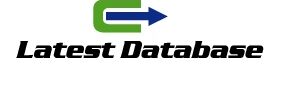Building an SEO-friendly web site doesn’t happen by accident. It requires an understanding of what elements search engines examine and how those elements affect your ranking. It also requires including as many of those elements as possible on your site. It does little good to have all the right meta
tags in place if you have no content and no links on your page.
It’s easy to get caught up in the details of SEO and forget the simplest web-design principles — principles that play a large part in your search engine rankings. Having all the right keywords in the right places in your tags and titles won’t do you much good if the content on your page is non-existent or
completely unreachable by a search engine crawler.
Understanding entry and exit pages
Entry and exit pages are the first and last pages that a user sees of your web site. It’s important to understand that an entry page isn’t necessarily the home page on your web site. It can be any other page where a user lands, either by clicking through search engine results, by clicking a link from another web site or a piece of marketing material, or by bookmarking or typing directly into the address bar of a browser.
Entry pages are important in SEO, because they are the first page users see as they come onto the web site. The typical web site is actually several small connected sites. Your company web site might contain hubs, or central points, for several different topics. Say you’re a pet store. Then you’ll have hubs within your sites for dogs, cats, birds, fish, and maybe exotic animals. Each hub will have a main page — which will likely be your entry page for that section — and several additional pages leading from that central page to other pages containing relevant content, products, or information about specific topics.
Understanding which of your pages are likely entry pages helps you to optimize those pages for search engine crawlers. Using the pet-store example, if your home page and all the hub pages are properly SEO’ed, you potentially could be ranked at or near the top of five different sets of search results. When you add additional entry pages deeper in your web site structure (that is, a dogtraining section to the hub for dogs), you’ve increased the number of times you can potentially end up at the top of search engine rankings.
Because entry pages are important in the structure of your web site, you want to monitor those pages using a web-site analytics program to ensure they are working the way you expect them to work. A good analytics program, like Google Analytics, will show you your top entry and exit pages.
Exit pages are those from which users leave your site, either by clicking through an exiting link, selecting a bookmark, or typing a different web address into their browser address bar. But why are exit pages important? They have two purposes; the first is to drive users from their entry
pages to a desired exit page. This is called the path that users travel through your site. A typical path might look something like this:
SERP ➪ Home ➪ email database ➪ Product Pages ➪ Shopping Cart ➪Checkout ➪ Receipt
In this example, Home is the entry page and Receipt is the exit page. By looking at this navigational path, you can tell how users travel through your page and where they fall off the page. But there’s an added benefit to understanding the navigational path of your users. When you know how users
travel through your site, you can leave what’s called a bread-crumb trail for them. That’s a navigational indicator on the web site that allows them to quickly see where they are on your site, as shown in Figure 3-6. This is the navigation path shown on the Wal-Mart web site. You can quickly see
where in the navigational structure of the site you’re located.
The bread-crumb trail not only helps users return to a previous page in the navigational path; it also makes it easier for a web crawler to fully examine your site. Because crawlers follow every link on your page, this is an internal link structure that leads crawlers to individual pages that you want to
have included in search engine results.
